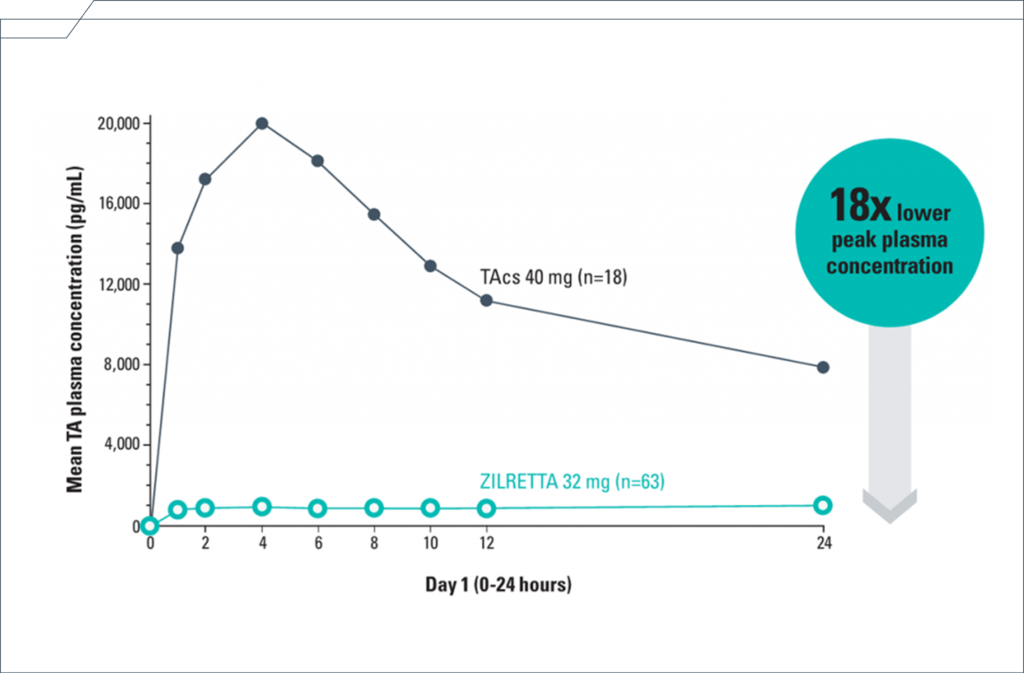ZILRETTA decreased peak systemic exposure1

- Results based on a pharmacokinetic study evaluating concentration of TA in plasma following a
single intra-articular injection of ZILRETTA® (triamcinolone acetonide extended-release
injectable suspension) (n=60) or TAcs (n=18)2
-
TA plasma concentrations are shown for blood samples collected periodically over
24 hours1
-
- ZILRETTA reduced peak systemic exposure to TA compared with TAcs (1144 pg/mL vs 21,062 pg/mL)3*
Based on Cmax levels following a single intra-articular injection of ZILRETTA and TAcs.
TAcs=triamcinolone acetonide crystalline suspension.
Minimal increase in blood glucose levels vs TAcs in patients with controlled type 2 diabetes3
- Results based on a pharmacodynamic study evaluating a single injection of ZILRETTA or TAcs in patients with orally controlled Type 2 diabetes; primary endpoint was the change in average blood glucose 72 hours pre-injection compared with 72 hours post-injection3
- ZILRETTA demonstrated a statistically significantly smaller LS mean change (14.7 mg/dL vs 33.9
mg/dL; P=0.0452)3
- ZILRETTA: Average glucose values were 155.2 mg/dL pre-injection and 163.4
mg/dL
(range: 89.8 mg/dL to 298.8 mg/dL) post-injection1,3 - TAcs: Average glucose values were 161.7 mg/dL pre-injection and 198.8 mg/dL
(range: 135.1 mg/dL to 315.8 mg/dL) post-injection1,3
- ZILRETTA: Average glucose values were 155.2 mg/dL pre-injection and 163.4
mg/dL
- Corticosteroids may increase blood glucose concentrations; effects on blood glucose can vary widely from patient to patient and may differ from the results seen in this study
The clinical relevance of this plasma exposure and blood glucose information is unknown
LS=least squares.

